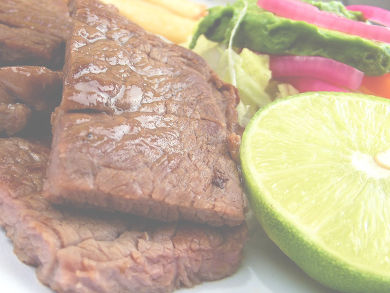Advances in food technology and life science research increasingly affect the way how food is produced and prepared. Transglutaminase forms bonds between proteins. It is used, for example, to create a sirloin looking steak out of a cheaper cut of beef or a high-end fish meal looking like a wood grain which consists of fish of different colors. To produce gluten free dishes, meat glue is used instead of flour as a binder. These and similar techniques can help to prepare food more effectively and creatively, and can help to bring out flavors and taste.
Mark Post, Maastricht University, The Netherlands, has produced the most expensive burger in the world; it costs US $ 330,000 to culture and produce. The meat was created using extracted stem cells from cow muscle tissue which was cultured with nutrients and growth-enhancing chemicals for three weeks [1]. The cells were then placed into small petri dishes where they grew to form stripes of muscle a centimeter long and a few millimeters thick. From these fibers, pellets and eventually patties could be formed into a pure beef burger. Beetroot juice had to be added for coloring and breadcrumbs, caramel, and saffron as taste enhancers. Post hopes that 3D printing technology will help to improve the burgers’ taste.
Howard Wolinsky, Chicago, IL, USA, and Kristofor Husted, Columbia, MO, USA, discuss pros and cons of the lab-grown burger. The new technology could help to meet the growing demand of meat in the world and could also reduce greenhouse gas coming from large stock animals for beef and pork production. However, lab-grown meat will need factories, as well.
One question is how lab-grown meat will be perceived. Whereas customers have already proved that they buy completely abstract meat such as sausages, burgers, chicken nuggets, it is unclear if the lab-product will be seen as vegetarian or kosher. For sure it could provide us with dining experiences with food products that we can hardly envision today.
- Science for Food – Molecular Biology Contributes to the Production and Preparation of Food,
Howard Wolinsky, Kristofor Husted,
EMBO Reports 2015.
https://doi.org/10.15252/embr.201540128
[1] Mark J. Post, Cultured beef: medical technology to produce food, Science of Food and Agriculture 2013. https://doi.org/10.1002/jsfa.6474




